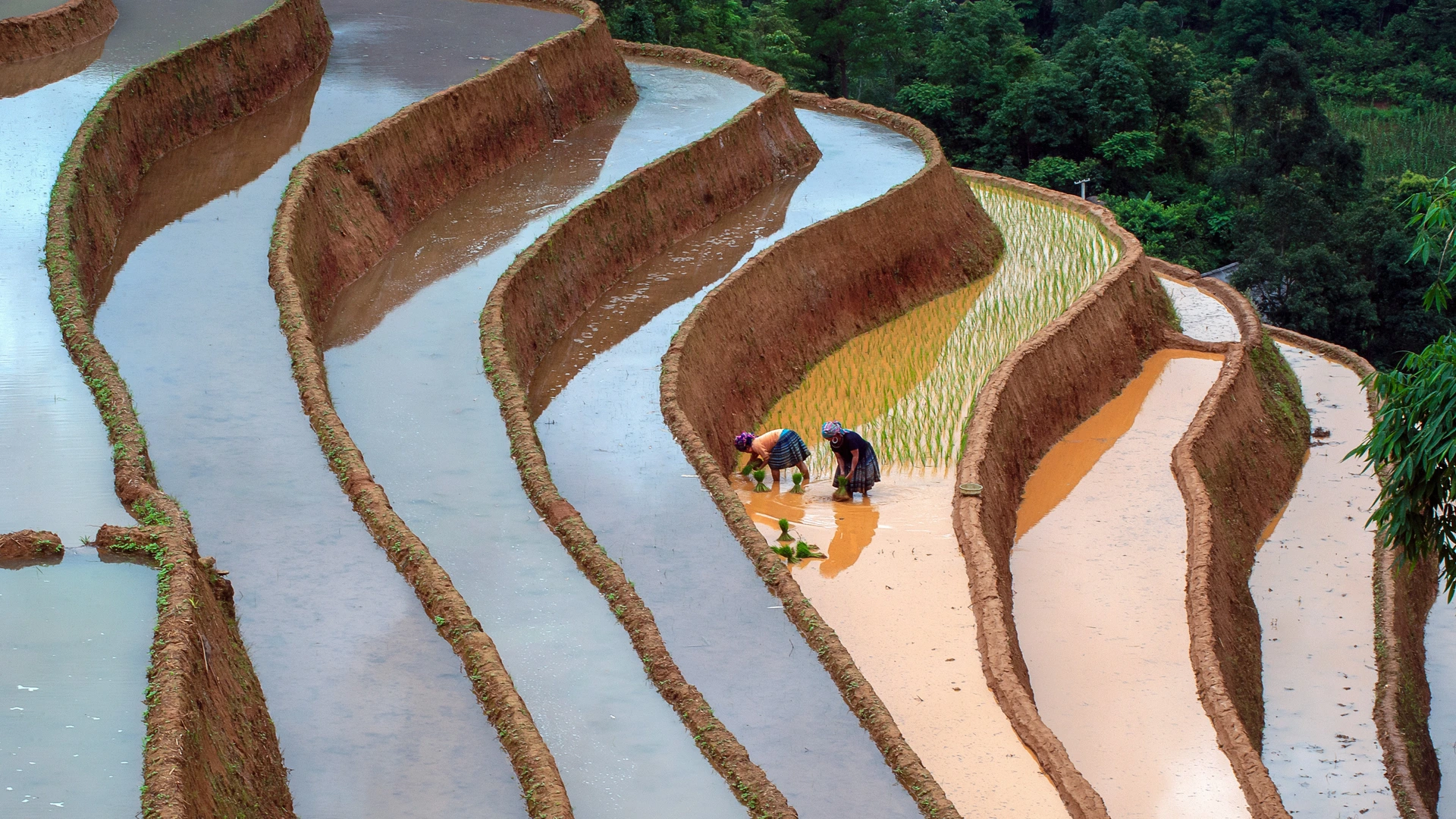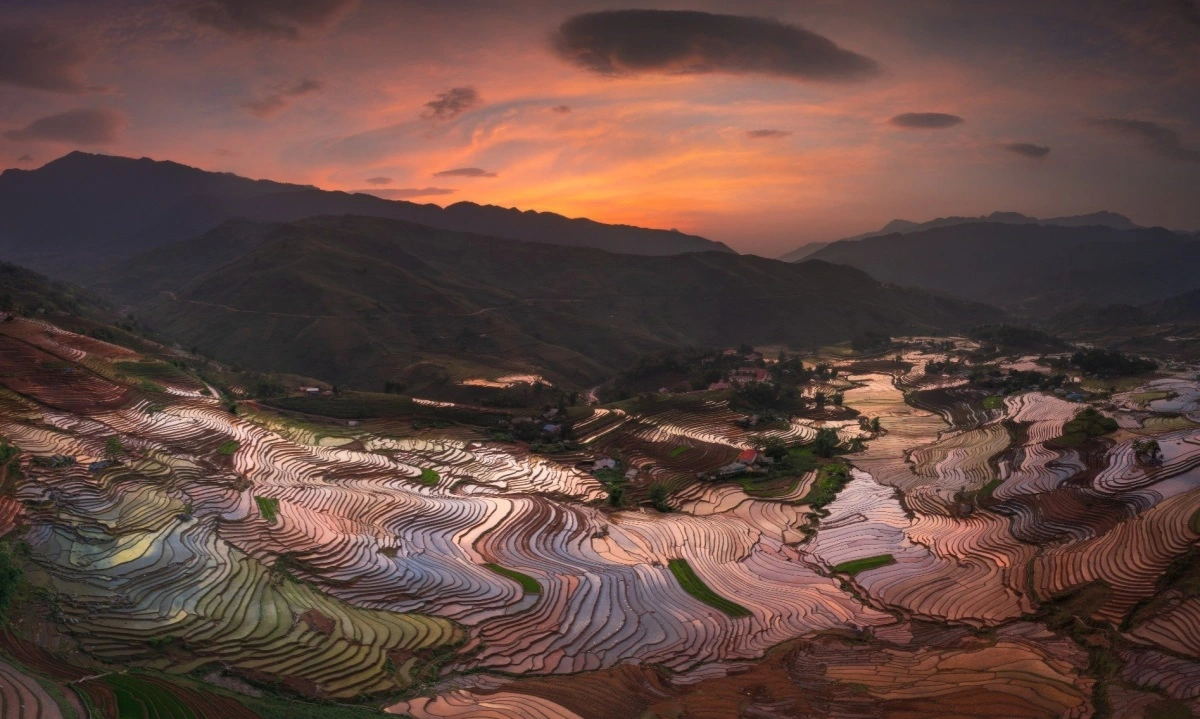
From mid-May, terraced fields in Lao Cai are in the pouring season, also known as the pouring season. People in the northern highlands only cultivate one rice crop a year, so the pouring season is unique to this region. The surface of the field is flooded layer by layer, reflecting the colors of nature.
Pictured is the sunrise of a field in Sie Ma Suo commune, Bat Xat district, Lao Cai.
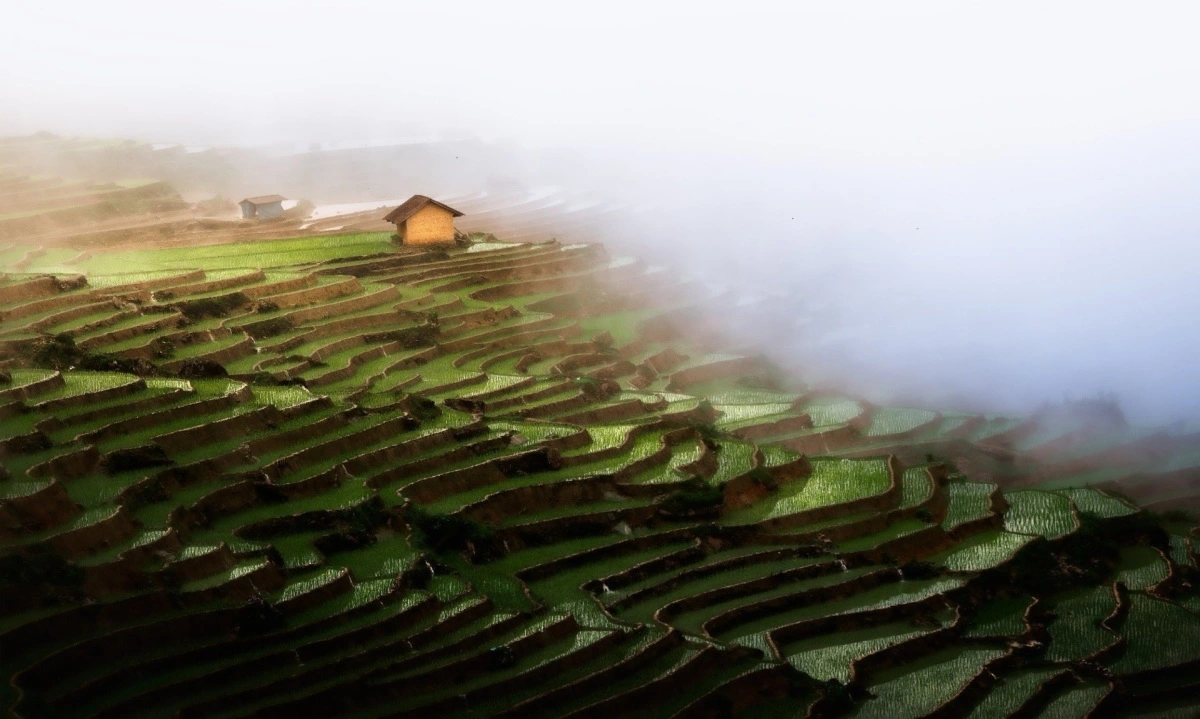
Fields in Ai Contractha village, Bat Xat district, are covered in the green of young plating, as farmers transplant rice early from mid-May.
Photographer Cao Ky Nhan, based in Ho Chi Minh City, spent nearly a week in Bat Xat district, northwest of Lao Cai, hunting for photos of terraced fields during the pouring season.
Bat Xat district is about 52 km from Lao Cai city, traveling more than an hour by car. The terrain here is 70% hilly, with more than 3,000 hectares of terraced fields.
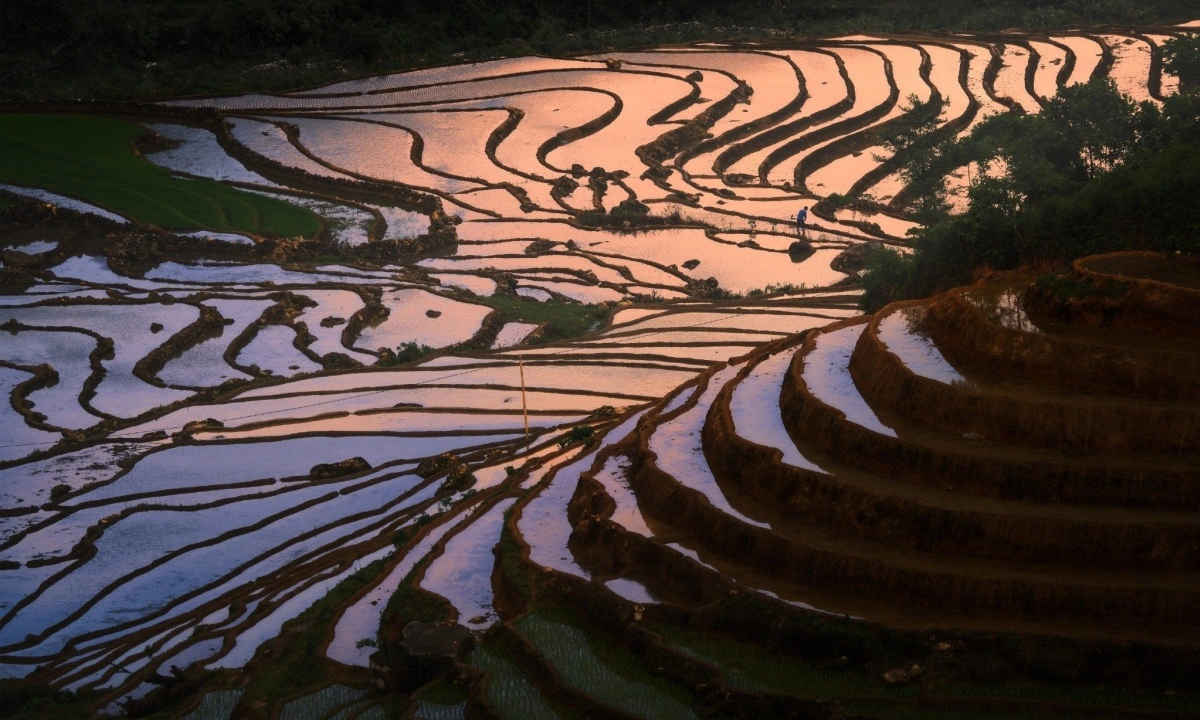
Muong Hum, Sie Ma Suo, Den Sang, Y Ty and Ai Thau communes are located about 9-18 km apart, the travel time to each point is about 30-45 minutes. At the close of the pouring season, farmers sow plating first. When the rains fall, they plow the land, make banks, and channel water from mountain currents into each field.
In the picture, the sun shadow falls on the untransplanted terraced field in Den Sang commune.
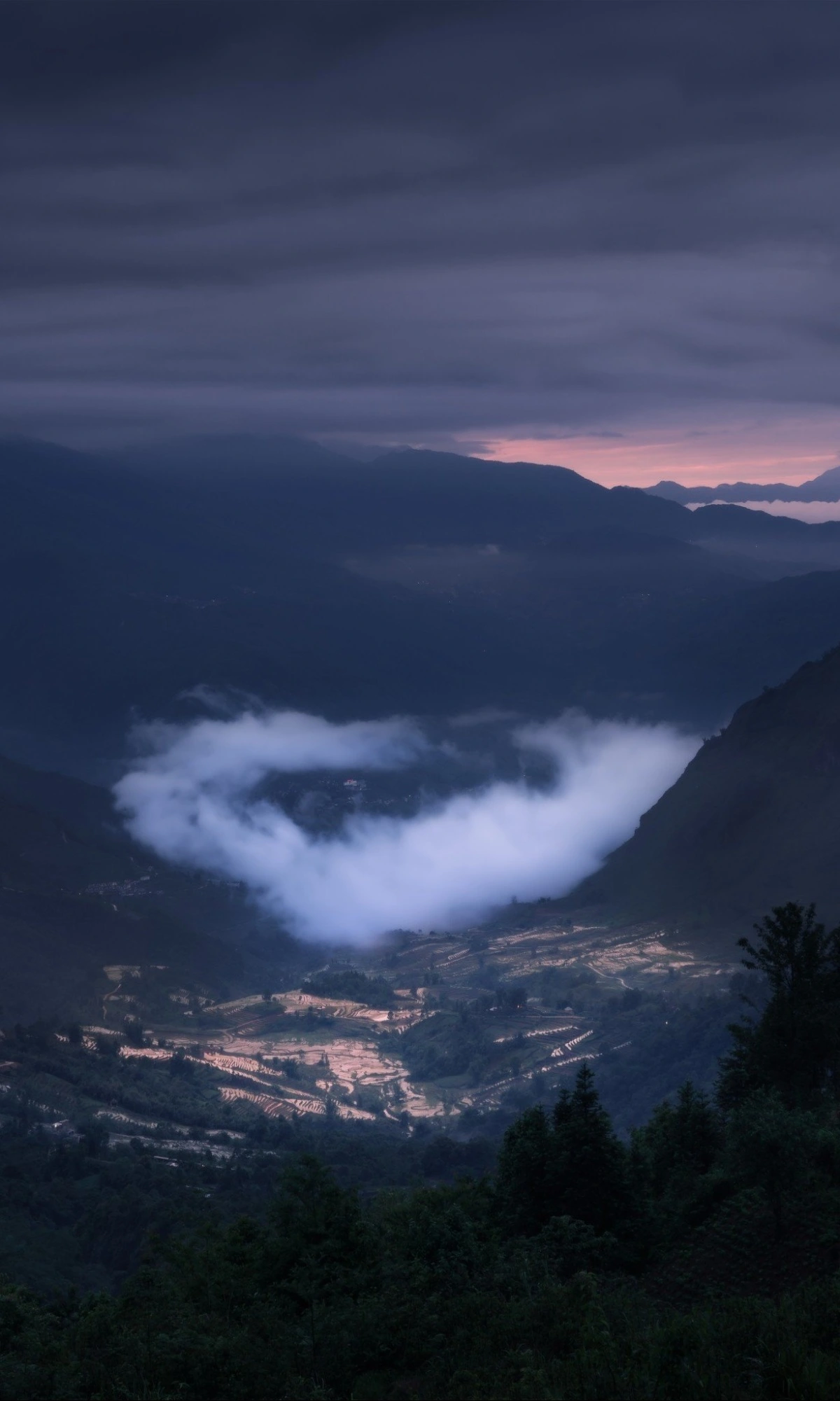
The terraced fields in the Y Ty valley are surrounded by mountains and forests, and the fog spreads the entrance in the early morning.
Terraced fields were built to take advantage of a narrow area of mountainous land and steep hills, creating an optimal irrigation system and increasing agricultural productivity. Most of the rice field landscape in Bat Xat has the same terrain, stacked fields, surrounded by hills and mountains.
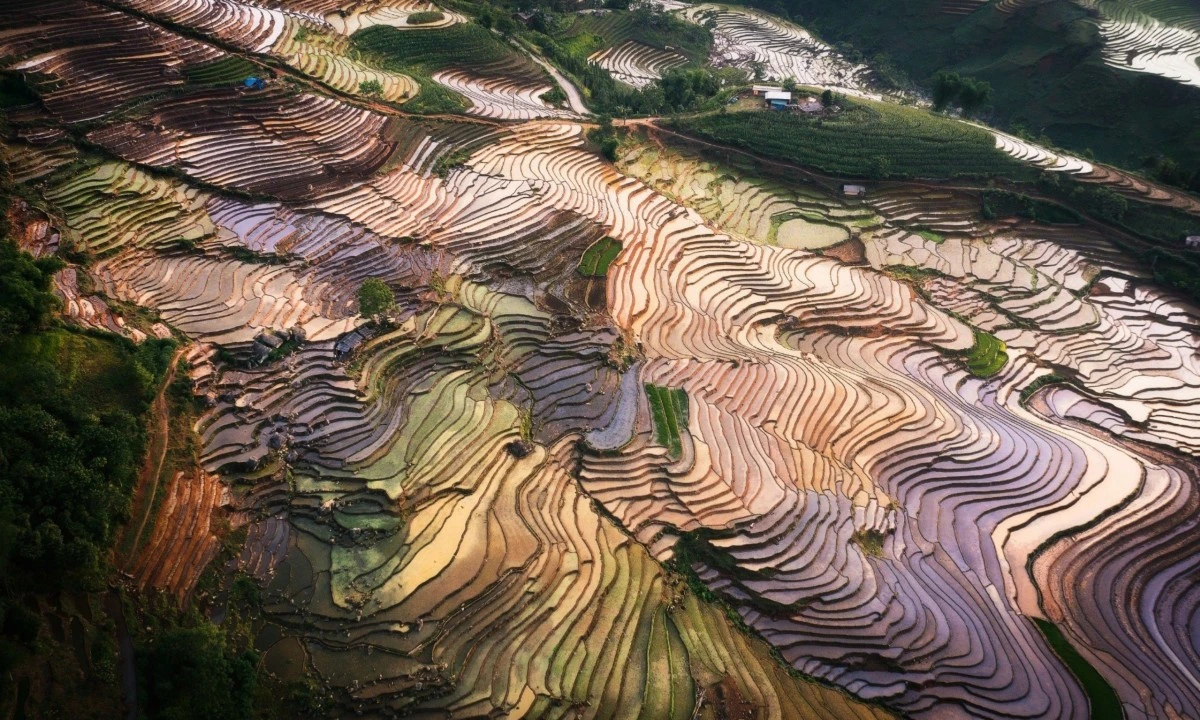
The water surface of the fields in Sieve Ma Suo is silhouetted in all colors, creating a typical scene in the northern mountains at the time of establishment. The terraced fields in Bat Xat have the characteristic of stretching from the bottom of the valley to the mountain, forming a dense layer. The banks of the fields are also lower than other areas and the water fields reflect more colors.
In the pouring season, the water surface of the terraces reflects many natural colors: golden brown of mud, purple green of algae, green of young plating, color reflecting the light of the sky. The colors of nature create a picture on the surface of the field, strata and class.
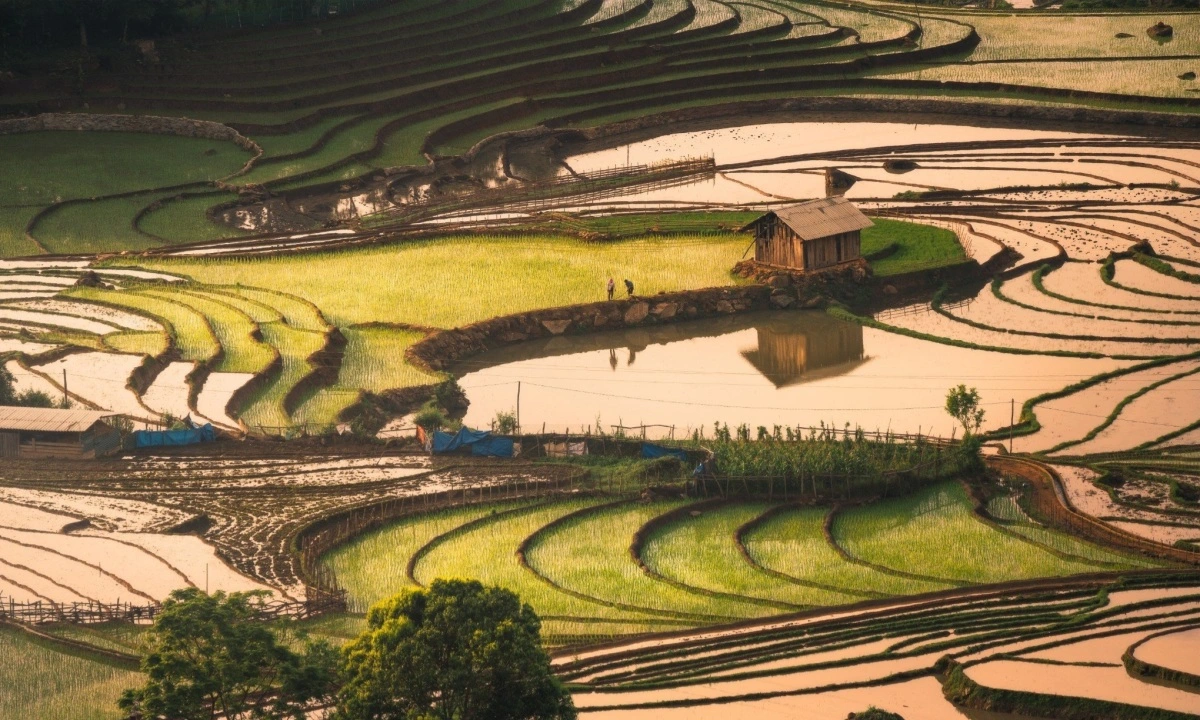
The terraced fields in Sieve Ma Suo are half greened by young plating. In May 5-6, the weather in Lao Cai is prone to rain, making it difficult for those who want to see the flooded terraces.
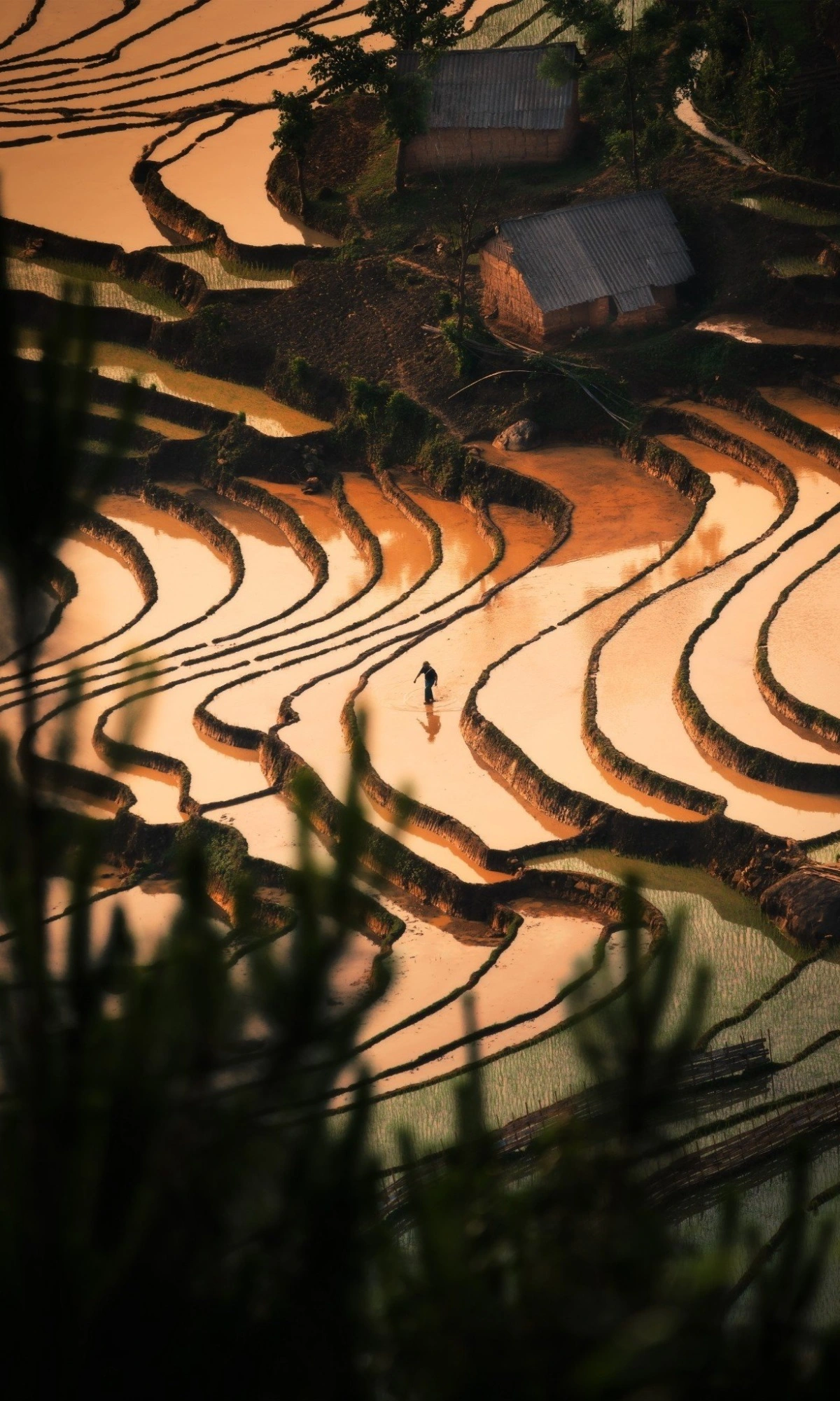
A farmer transplants plating on a terraced field in Sieve Ma Suo when the sun has not yet come out. In the transplanting season, farmers in Bat Xat highland communes go to the field at 6-7h and return home in the afternoon of 16-17h. Every year, the pouring water season attracts visitors and photographers no less than the ripe rice season. Due to unfavorable weather, water poured into the terraces less and irregularly as in previous seasons. Wherever the water goes, farmers also take advantage of transplanting rice there, no longer waiting like every year.
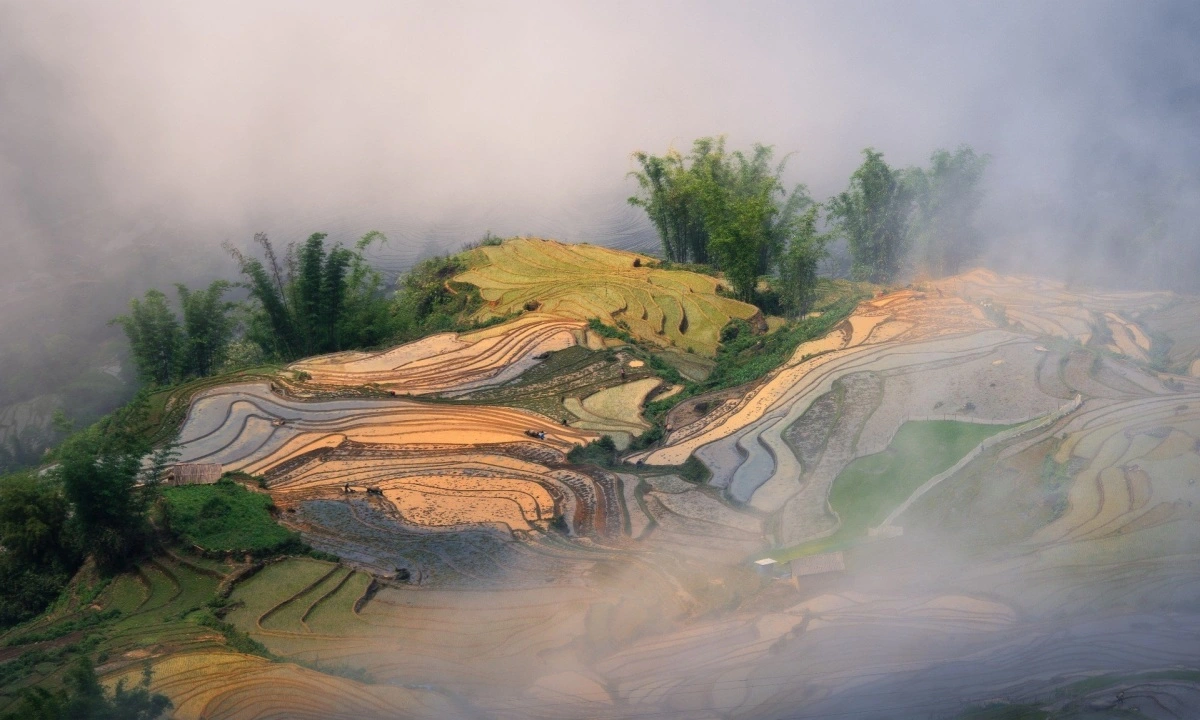
The scene of the fields in Ai Thuong village is engulfed in clouds. This village is located on Ma Cha Va mountain at an altitude of about 2,300 m. To reach this high point, visitors have to overcome steep dirt roads.
The road from Y Ty to Ai Tender is the most difficult to travel in Bat Xat district, with many landslides, many potholes, gravel. The two points are only 13 km apart, but travel takes an hour. In addition to admiring nature, visitors can come to Lao Cai highland district in the pouring water season to explore the indigenous culture of the Red Dao, Dao Tuyen, H'Mong, Ha Nhi people.
According to VnE
